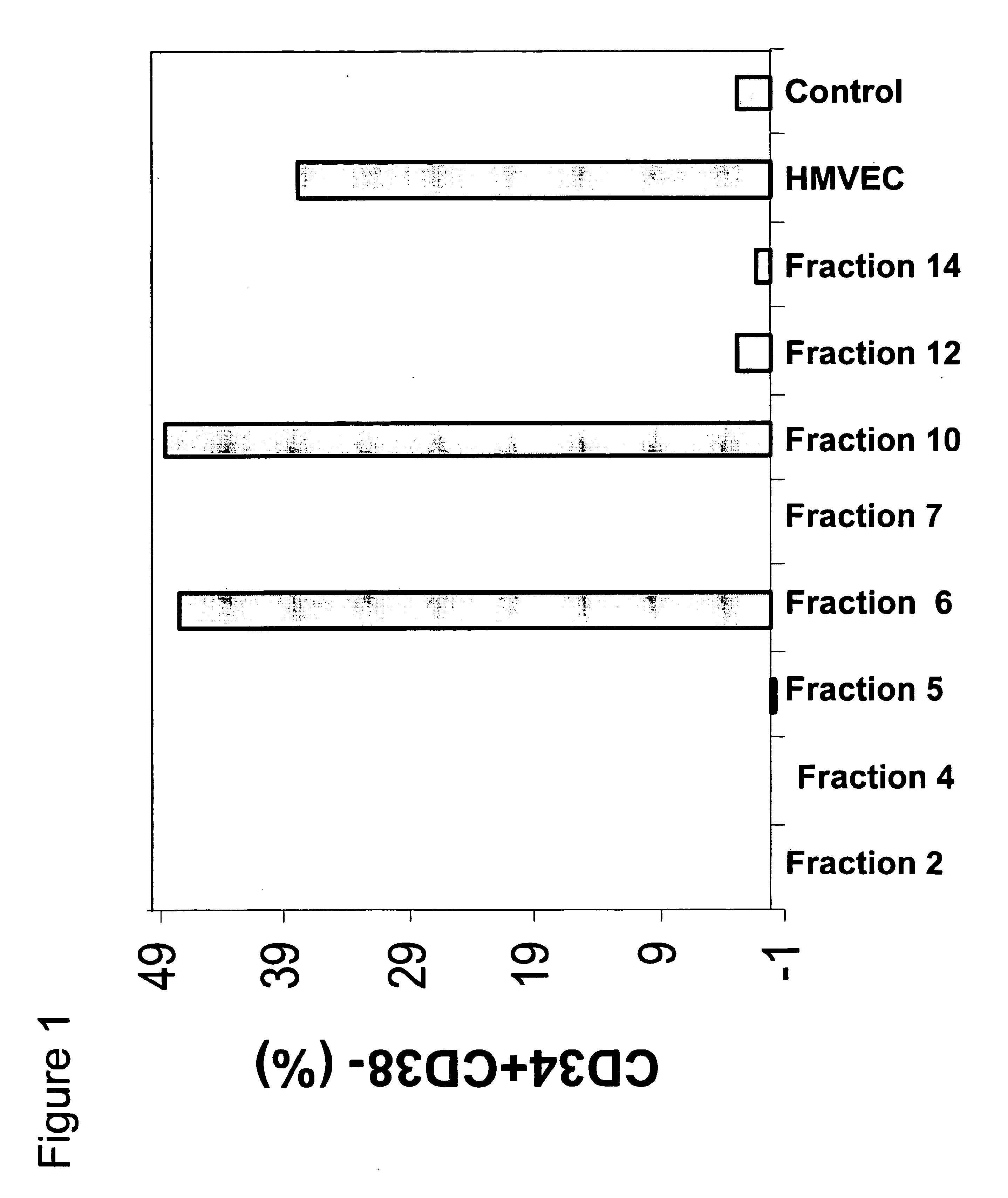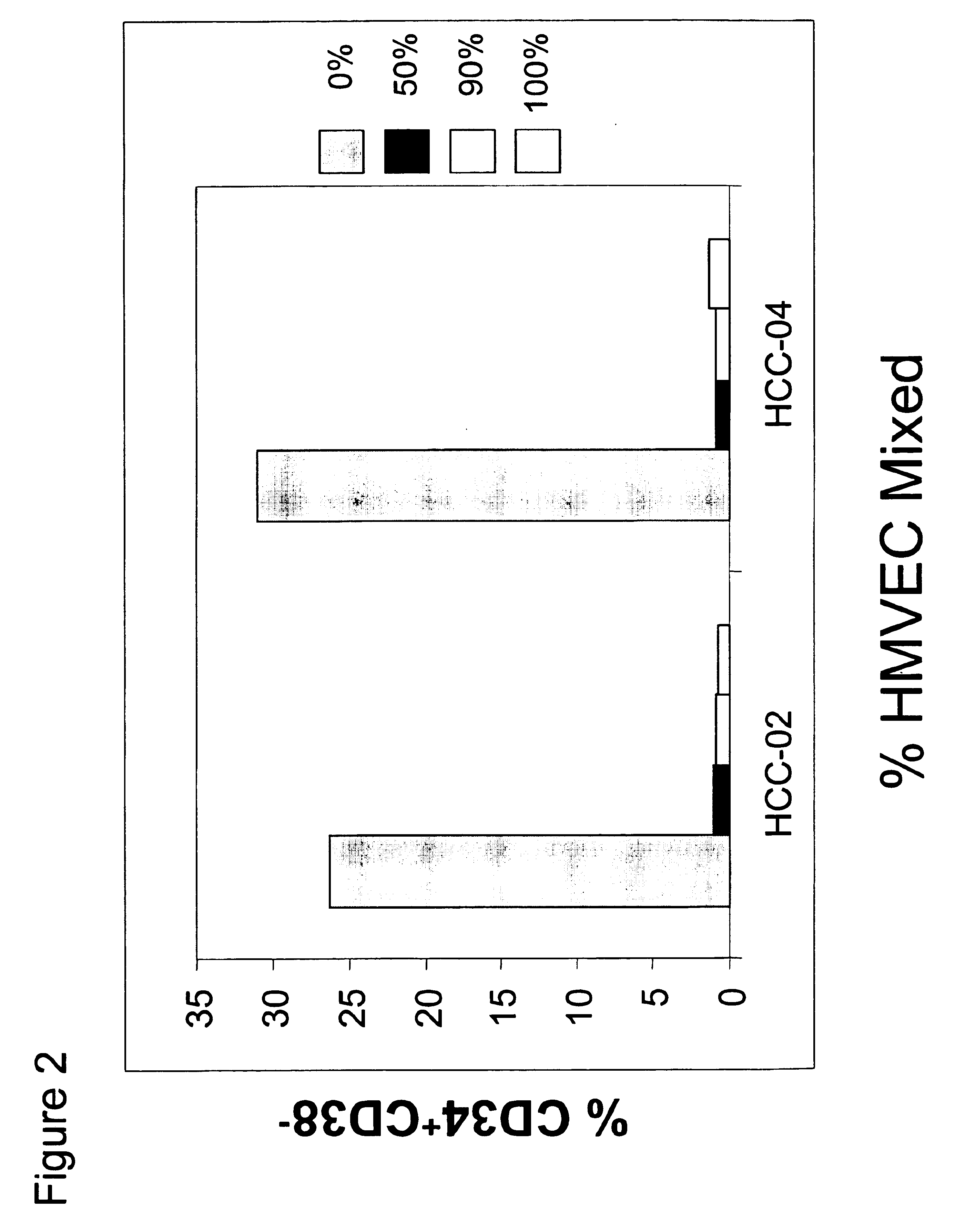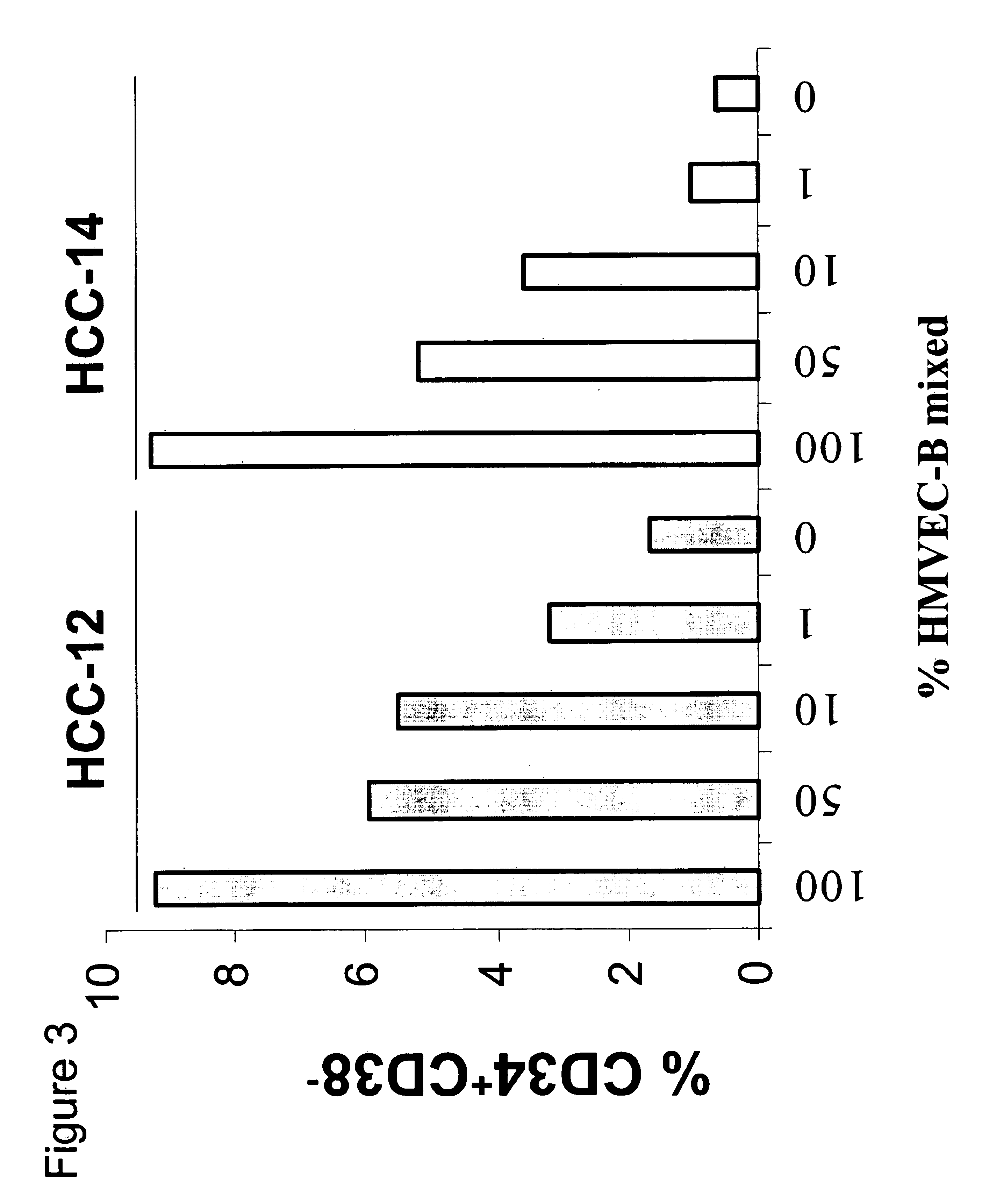Modulation of primary stem cell differentiation using an insulin-like growth factor binding protein
a technology of growth factor and binding protein, which is applied in the field of ex vivo culture can solve the problems of exhaustion of stem cells and progenitor cells, and achieve the effect of controlling the differentiation of hematopoietic stem cells
- Summary
- Abstract
- Description
- Claims
- Application Information
AI Technical Summary
Benefits of technology
Problems solved by technology
Method used
Image
Examples
example 1
Elutriation of HBVECs and Extinction Assay for the Identification of Factors that Modulate Hematopoietic Cell Differentiation
[0077]As noted above, HBVECs are cells that modulate hematopoietic cell differentiation. To identify specific differentiation-modulatory factors produced by HBVECs (Clonetics Corp., Walkersville, Md.), these cells were elutriated into fourteen different fractions, named fractions HCC-01 to HCC-14. The different HBVEC elutriated fractions were then subjected to an extinction assay in order to determine the effect of each cell fraction on the extinction of a population of CD34+CD38− cells combined with the fraction, and also to discriminate between elutriated HBVEC fractions with more or less positive, neutral, or negative activity. This assay was carried out as follows. Each of the fourteen different elutriated fractions was expanded into clonal pools that were later plated into tissue culture dishes. CD34+ / −, CD38−, lin− cells (human umbilical cord blood cells...
example 2
Optimization of the Extinction Assay
[0082]Conditions for optimizing the detection of expanded or maintained populations of CD34+CD38− cells were also determined. HBVECs were mixed with elutriated cell fraction HCC-14 such that the mixture contained 10%, 1%, 0.5%, 0.1%, 0.05% or 0% HBVECs. CD34+ / −CD38−Lin− cells were added to the cultures, and the presence of CD34+CD38− cells was assessed each day by flow cytometry, as a percentage of the total cell population. The results of this assay revealed that day 6 was optimal for detecting differences in CD34+CD38− cells present in samples with between 1% and 10%, 0.5% and 1%, and 0.1% or less mixing with HBVECs (FIG. 4). These results also demonstrate that a 1% positive response (1% presence of CD34+CD38− cells) could be detected using the mixing experiment. Accordingly, a functional genomics approach that could measure such a level of CD34+CD38− cells could be constructed.
[0083]To further develop the assay conditions for identifying factor...
example 3
Functional Expression Cloning Strategy for the Identification of Compounds that Modulate Differentiation of Hematopoietic Cells
[0086]Based on the above findings, a functional expression cloning strategy was designed to identify factors that modulate hematopoietic stem cell and progenitor cell differentiation. In general, a cDNA expression library was generated from positive HBVECs. The cDNA library members from the positive cell line were placed into the neutral cell line of elutriated fraction HCC-14, and the library was screened using the above-described CD34+CD38− cell extinction assay. Based on the estimation that there are as many as approximately 100,000 human genes, and if a 1% sensitivity is desired in the extinction assay, the genes can be put into cells that form colonies such that there are 40 colonies per well of a 96-well tissue culture plate. A gene that modulates hematopoietic stem cell or hematopoietic progenitor cell differentiation that is expressed at a ratio of 1...
PUM
| Property | Measurement | Unit |
|---|---|---|
| Fraction | aaaaa | aaaaa |
| Fraction | aaaaa | aaaaa |
| Angle | aaaaa | aaaaa |
Abstract
Description
Claims
Application Information
 Login to View More
Login to View More - R&D
- Intellectual Property
- Life Sciences
- Materials
- Tech Scout
- Unparalleled Data Quality
- Higher Quality Content
- 60% Fewer Hallucinations
Browse by: Latest US Patents, China's latest patents, Technical Efficacy Thesaurus, Application Domain, Technology Topic, Popular Technical Reports.
© 2025 PatSnap. All rights reserved.Legal|Privacy policy|Modern Slavery Act Transparency Statement|Sitemap|About US| Contact US: help@patsnap.com



